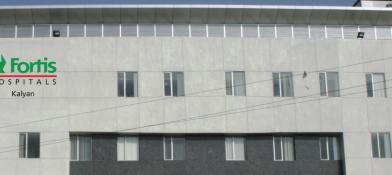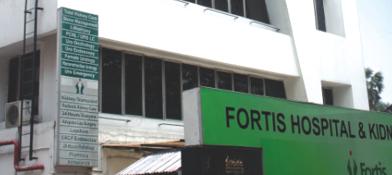Abdominal Hysterectomy: Purpose, Procedure & Recovery
An abdominal hysterectomy is a major surgical procedure to remove the uterus through an incision in the lower abdomen. It is considered a definitive and effective treatment for a range of gynecological conditions that have not responded to more conservative therapies. This procedure is typically recommended when the uterus is significantly enlarged, when cancer is present or suspected, or when a surgeon requires a clear and open view of the pelvic organs.
While it is a significant surgery with a considerable recovery period, for many women, it provides complete and lasting relief from debilitating symptoms like chronic pain, heavy bleeding, and pressure, ultimately leading to a substantial improvement in their quality of life. This guide provides a comprehensive overview of the procedure, the conditions it treats, what to expect before, during, and after surgery, and the long-term outcomes, so you can have an informed and confident discussion with your doctor.
What is an Abdominal Hysterectomy?
An abdominal hysterectomy, also known as a total abdominal hysterectomy (TAH), is the surgical removal of the entire uterus, including the cervix, via an incision in the abdomen. Depending on the reason for the surgery, the surgeon may also remove other organs in the pelvic region. The different types include:
- Total Hysterectomy: Removal of the uterus and cervix.
- Hysterectomy with Salpingo-Oophorectomy: Removal of the uterus, cervix, one or both fallopian tubes (salpingectomy), and one or both ovaries (oophorectomy).
The procedure is performed under general anesthesia, meaning you will be asleep and feel no pain. The surgeon makes an incision, which can be either a horizontal bikini-line cut (Pfannenstiel incision) or a vertical cut from the navel to the pubic bone, depending on the size of the uterus and the reason for the surgery.
This open approach provides the surgeon with an excellent view and ample space to work, which is crucial in complex cases involving large fibroids, extensive endometriosis, or cancer. The surgery typically takes one to three hours to complete.
When is an Abdominal Hysterectomy Recommended?
An abdominal hysterectomy is reserved for specific medical conditions where less invasive treatments are unsuitable or have failed. It is a decision made after careful evaluation and discussion between you and your gynecologist. The primary indications include:
- Large Uterine Fibroids: For very large or numerous fibroids (leiomyomas) that cause severe pain, heavy bleeding, or pressure on the bladder or bowels, an abdominal approach is often necessary for safe removal.
- Gynecologic Cancers: It is a standard treatment for cancers of the uterus (endometrial cancer), cervix, and ovaries. The open approach allows the surgeon to assess the extent of the disease and remove affected lymph nodes if required (staging).
- Severe Endometriosis: In cases where endometrial-like tissue has grown extensively outside the uterus, causing severe chronic pain, and has not responded to medication or less invasive surgeries.
- Adenomyosis: When the tissue that lines the uterus grows into the muscular wall of the uterus, causing debilitating pain and heavy bleeding, hysterectomy is the only definitive cure.
- Uterine Prolapse: In severe cases where the uterus descends into the vaginal canal, particularly when combined with other pelvic relaxation issues.
- Chronic Pelvic Pain: For intractable pelvic pain originating from the uterus that has not been alleviated by any other medical or surgical means.
- Life-Threatening Uterine Bleeding: In rare, emergency situations involving uncontrollable bleeding after childbirth (postpartum hemorrhage) or from other causes.
Understanding the Underlying Conditions
Uterine Fibroids (Leiomyomas)
Uterine fibroids are non-cancerous growths of the uterus that often appear during childbearing years. They are composed of muscle and fibrous tissue and can vary in size from undetectable to bulky masses that can distort and enlarge the uterus. Many women have fibroids with no symptoms, but for others, they can cause significant issues.
- Prevalence: Fibroids are extremely common, affecting up to 70-80% of women by the age of 50. The risk is higher in women who are overweight and those with a family history of fibroids.
- Symptoms: When symptomatic, fibroids can cause heavy or prolonged menstrual bleeding, leading to anemia; severe pelvic pain or pressure; frequent urination or difficulty emptying the bladder; constipation; and backache or leg pains.
Endometriosis
Endometriosis is a chronic and often painful disorder in which tissue similar to the tissue that normally lines the inside of your uterus — the endometrium — grows outside your uterus. It most commonly involves the ovaries, fallopian tubes, and the tissue lining the pelvis.
- Pathophysiology: This misplaced tissue continues to act as it normally would — it thickens, breaks down, and bleeds with each menstrual cycle. Because this blood has no way to exit the body, it becomes trapped, causing irritation, scar formation (adhesions), and severe pain.
- Symptoms: The primary symptom is pelvic pain, often associated with menstrual periods. Other symptoms include pain during intercourse, pain with bowel movements or urination, excessive bleeding, and infertility. The severity of the pain is not always a reliable indicator of the extent of the condition.
Risk Factors & When to See a Doctor
It is important to consult a gynecologist if you are experiencing persistent symptoms that affect your daily life. Seek medical advice if you have:
- Menstrual periods that are consistently very heavy, requiring you to change pads or tampons every hour.
- Bleeding that lasts longer than seven days.
- Severe pelvic, abdominal, or lower back pain that is not relieved by over-the-counter medication.
- A feeling of fullness or pressure in your lower abdomen.
- Pain during sexual intercourse.
- Difficulty with urination or bowel movements.
These symptoms warrant a thorough evaluation to determine the underlying cause and discuss appropriate treatment options.
Our Specialists
Our Department of Obstetrics & Gynaecology is comprised of highly skilled and compassionate surgeons with extensive experience in performing complex gynecological procedures.
Dr. Arpana Jain
DIRECTOR OBSTETRICS & GYNAECOLOGY | Fortis Shalimar Bagh
Dr. Madhu Goel
DIRECTOR OBSTETRICS & GYNAECOLOGY | Fortis La Femme GK
SENIOR DIRECTOR OBSTETRICS & GYNAECOLOGY | Fortis La Femme GK
Dr. Meenakshi Ahuja
SENIOR DIRECTOR OBSTETRICS & GYNAECOLOGY | Fortis La Femme GK
Patient Stories
For years, I planned my life around my periods. The bleeding was so heavy and the pain from my fibroids was so intense that I often had to cancel plans and miss work. The decision to have a hysterectomy was difficult, but the relief was immediate and life-changing. My recovery was a journey, but the team at Fortis was supportive every step of the way. I feel free for the first time in a decade.
— S. Verma, 44, Gurugram
After being diagnosed with endometrial cancer, my world turned upside down. My surgeon explained that an abdominal hysterectomy was the most critical part of my treatment. The clarity and confidence of the entire medical team were incredibly reassuring during a terrifying time. The surgery was successful, and while the recovery required patience, it gave me a chance to be cancer-free. I am eternally grateful.
— R. Iyer, 52, Bengaluru
Diagnosis & Pre-Operative Workup
Before recommending an abdominal hysterectomy, your doctor will perform a comprehensive evaluation to confirm your diagnosis and rule out other conditions. This process includes:
- Pelvic Examination: To check your uterus, cervix, and ovaries for any abnormalities in size or shape.
- Ultrasound Scan: Uses sound waves to create images of your pelvic organs, which can identify fibroids, adenomyosis, or other structural issues.
- Magnetic Resonance Imaging (MRI): May be used to get more detailed images to determine the size and location of fibroids or the extent of endometriosis.
- Endometrial Biopsy: A small sample of tissue is taken from the lining of your uterus to check for abnormal cells or cancer.
- Blood Tests: To check for anemia (due to heavy bleeding) and to assess your general health before surgery.
Preparing for Your Abdominal Hysterectomy
Once your surgery is scheduled, you will receive detailed instructions to prepare. Proper preparation is key to a smooth procedure and recovery.
- Medical Evaluation: You will undergo a pre-anesthesia check-up, which may include a chest X-ray and an ECG, to ensure you are fit for surgery.
- Medication Review: Inform your doctor of all medications you take, including supplements and over-the-counter drugs. You will likely be asked to stop taking blood-thinning medications like aspirin or warfarin for a period before surgery.
- Fasting: You will be required to stop eating and drinking for at least eight hours before your surgery.
- Bowel Preparation: In some cases, you may be given instructions for a bowel prep to clean out your intestines before the procedure.
- Arrange for Support: You will need someone to drive you to and from the hospital and to help you at home for the first one to two weeks of your recovery.
What Happens During the Procedure
On the day of the surgery, you will be taken to the operating room.
- Anesthesia: The anesthesiologist will administer general anesthesia through an IV line, so you will be asleep throughout the procedure. A breathing tube will be placed to help you breathe.
- Incision: The surgeon will make either a horizontal or vertical incision in your lower abdomen.
- Removal of the Uterus: The surgeon will carefully detach the uterus from its supporting ligaments and blood vessels, as well as from the fallopian tubes and ovaries if they are also being removed.
- Closure: Once the uterus is removed, the surgeon will close the top of the vagina to create a vaginal cuff. The abdominal muscles and skin are then closed with stitches or staples.
The entire operation typically lasts between one and three hours.
After the Procedure: Recovery & Follow-Up
Recovery from an abdominal hysterectomy is a gradual process that requires time and patience.
In the Hospital (Typically 2-4 days):
- You will wake up in a recovery room where your vital signs will be monitored closely.
- You will have an IV line for fluids and medication, and a catheter in your bladder to drain urine.
- Pain will be managed with medication, possibly through a patient-controlled analgesia (PCA) pump initially.
- You will be encouraged to start moving and walking with assistance as soon as possible to prevent blood clots.
At Home (Recovery takes 6-8 weeks):
- Incision Care: Keep the incision clean and dry. Follow your surgeon's instructions for showering and watch for signs of infection.
- Pain Management: You will be given a prescription for oral pain medication.
- Activity Restrictions: You must avoid heavy lifting (anything over 4-5 kgs), strenuous exercise, and sexual intercourse for at least six to eight weeks.
- Diet: Start with light foods and drink plenty of fluids to prevent constipation.
- Follow-up: You will have a post-operative appointment with your surgeon about two to six weeks after the surgery to check on your healing.
Risks & Possible Complications
Like any major surgery, an abdominal hysterectomy carries potential risks:
- Infection of the wound or pelvis
- Heavy bleeding (hemorrhage)
- Blood clots in the legs (DVT) or lungs (pulmonary embolism)
- Damage to nearby organs such as the bladder, ureters, or bowel
- Adverse reaction to anesthesia
- Formation of scar tissue (adhesions)
Your surgical team takes extensive precautions to minimize these risks.
Benefits of an Abdominal Hysterectomy
For women suffering from specific gynecological conditions, the benefits are profound:
- Definitive Cure: It is the only treatment that provides a complete and permanent cure for conditions originating in the uterus, like adenomyosis and large fibroids.
- Cessation of Bleeding: It completely stops heavy, painful, and irregular menstrual bleeding.
- Pain Relief: It provides lasting relief from chronic pelvic pain caused by uterine conditions.
- Cancer Treatment/Prevention: It removes uterine and cervical cancer and can prevent these cancers from developing.
Myths vs Facts
Take the Next Step
Making the decision to have an abdominal hysterectomy is significant. It is a path to resolving symptoms that may have impacted your life for years. If you are struggling with a complex gynecological condition and believe this procedure may be right for you, our team of expert surgeons is here to provide a thorough evaluation, answer all your questions, and guide you with compassionate care.
CTA: Book a Consultation | Get a Second Opinion
Frequently Asked Questions
1. How long will I need to stay in the hospital?
Ans. The typical hospital stay after an abdominal hysterectomy is two to four days, depending on your individual recovery progress.
2. How much pain will I have after the surgery?
Ans. You will experience post-operative pain, but it will be well-managed with a combination of intravenous and oral pain medications. The most significant pain usually subsides within the first few days.
3. Will I have a large scar?
Ans. You will have a scar on your lower abdomen. A horizontal bikini-line incision is about 4-6 inches long and is usually placed very low, often hidden by underwear. A vertical incision is more visible but may be necessary in certain cases.
4. What are the alternatives to an abdominal hysterectomy?
Ans. Alternatives depend on your specific condition and may include medication (hormonal therapy), uterine artery embolization for fibroids, myomectomy (surgical removal of fibroids only), endometrial ablation for bleeding, or less invasive hysterectomy techniques like vaginal or laparoscopic hysterectomy.
5. What happens to my hormones if my ovaries are removed?
Ans. If you are premenopausal and both ovaries are removed, you will enter surgical menopause immediately. You may experience symptoms like hot flashes and vaginal dryness. Your doctor will discuss the option of hormone replacement therapy (HRT) with you.
6. When can I return to work?
Ans. This depends on the nature of your job. If you have a desk job, you may be able to return in four to six weeks. If your job is physically demanding, you may need to wait the full eight weeks or longer.
7. Will I still need Pap tests after a total hysterectomy?
Ans. If your cervix was removed and your hysterectomy was for a non-cancerous reason, you will likely not need any more Pap tests. If it was for cancer, your doctor will advise you on the necessary follow-up.
8. What are the emotional effects of a hysterectomy?
Ans. It is normal to have a range of emotions. While many women feel relief, some may experience a sense of loss, especially regarding fertility. It is important to discuss these feelings with your doctor, partner, or a counsellor.








































